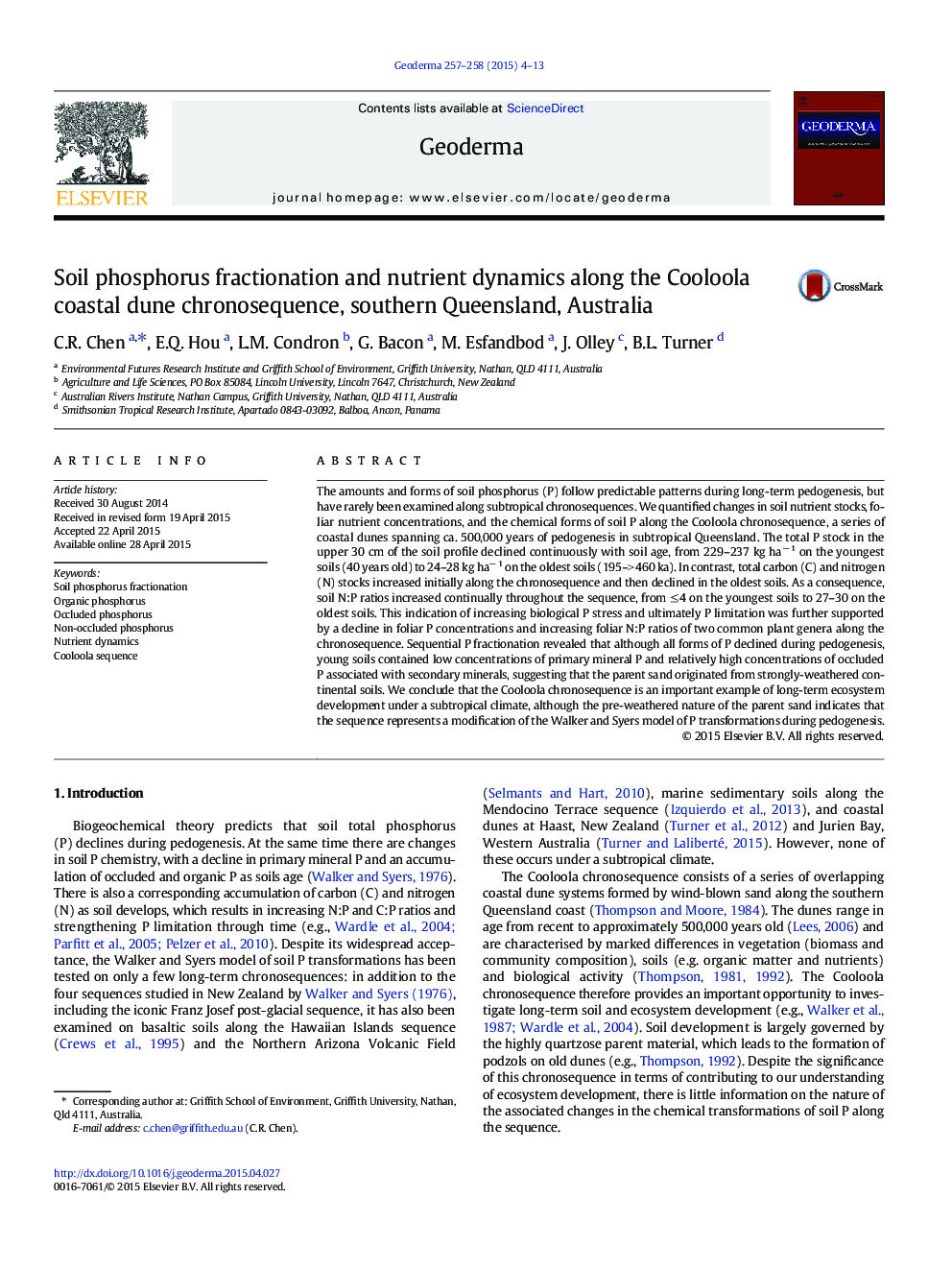| کد مقاله | کد نشریه | سال انتشار | مقاله انگلیسی | نسخه تمام متن |
|---|---|---|---|---|
| 4573122 | 1629457 | 2015 | 10 صفحه PDF | دانلود رایگان |

• Soil C, N and P dynamics was studied in a subtropical chronosequence.
• Total P and primary mineral P concentrations were low and decreased through time.
• The occluded, non-occluded, and organic P concentrations decreased with soil age.
• Rapid accumulation of organic matter may lead to high organic P in the young soils.
• This study modified the Walker and Syers model of P transformations.
The amounts and forms of soil phosphorus (P) follow predictable patterns during long-term pedogenesis, but have rarely been examined along subtropical chronosequences. We quantified changes in soil nutrient stocks, foliar nutrient concentrations, and the chemical forms of soil P along the Cooloola chronosequence, a series of coastal dunes spanning ca. 500,000 years of pedogenesis in subtropical Queensland. The total P stock in the upper 30 cm of the soil profile declined continuously with soil age, from 229–237 kg ha− 1 on the youngest soils (40 years old) to 24–28 kg ha− 1 on the oldest soils (195–> 460 ka). In contrast, total carbon (C) and nitrogen (N) stocks increased initially along the chronosequence and then declined in the oldest soils. As a consequence, soil N:P ratios increased continually throughout the sequence, from ≤ 4 on the youngest soils to 27–30 on the oldest soils. This indication of increasing biological P stress and ultimately P limitation was further supported by a decline in foliar P concentrations and increasing foliar N:P ratios of two common plant genera along the chronosequence. Sequential P fractionation revealed that although all forms of P declined during pedogenesis, young soils contained low concentrations of primary mineral P and relatively high concentrations of occluded P associated with secondary minerals, suggesting that the parent sand originated from strongly-weathered continental soils. We conclude that the Cooloola chronosequence is an important example of long-term ecosystem development under a subtropical climate, although the pre-weathered nature of the parent sand indicates that the sequence represents a modification of the Walker and Syers model of P transformations during pedogenesis.
Journal: Geoderma - Volumes 257–258, November 2015, Pages 4–13